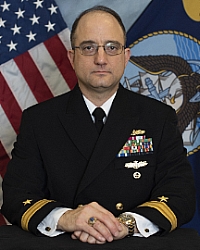
The head of the Navy office that develops, builds, and maintains unmanned and small surface combatants underscored the future frigate, FFG(X), will be an Aegis Frigate and is optimistic they will work out a solution with Congress on domestic sourcing of combatant equipment. The Navy is currently undergoing source selection for the detail design and construction (DD&C) competition of the frigate, which the Navy plans to succeed the Littoral Combat Ships to round out the small surface combatant fleet. The…

 By
By 











